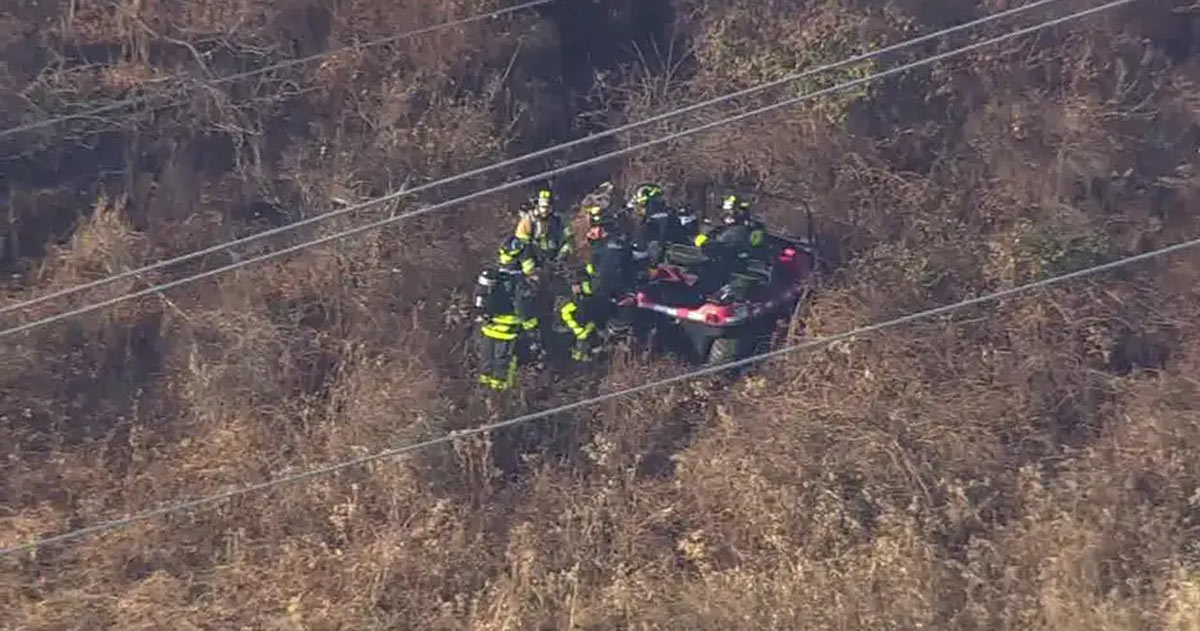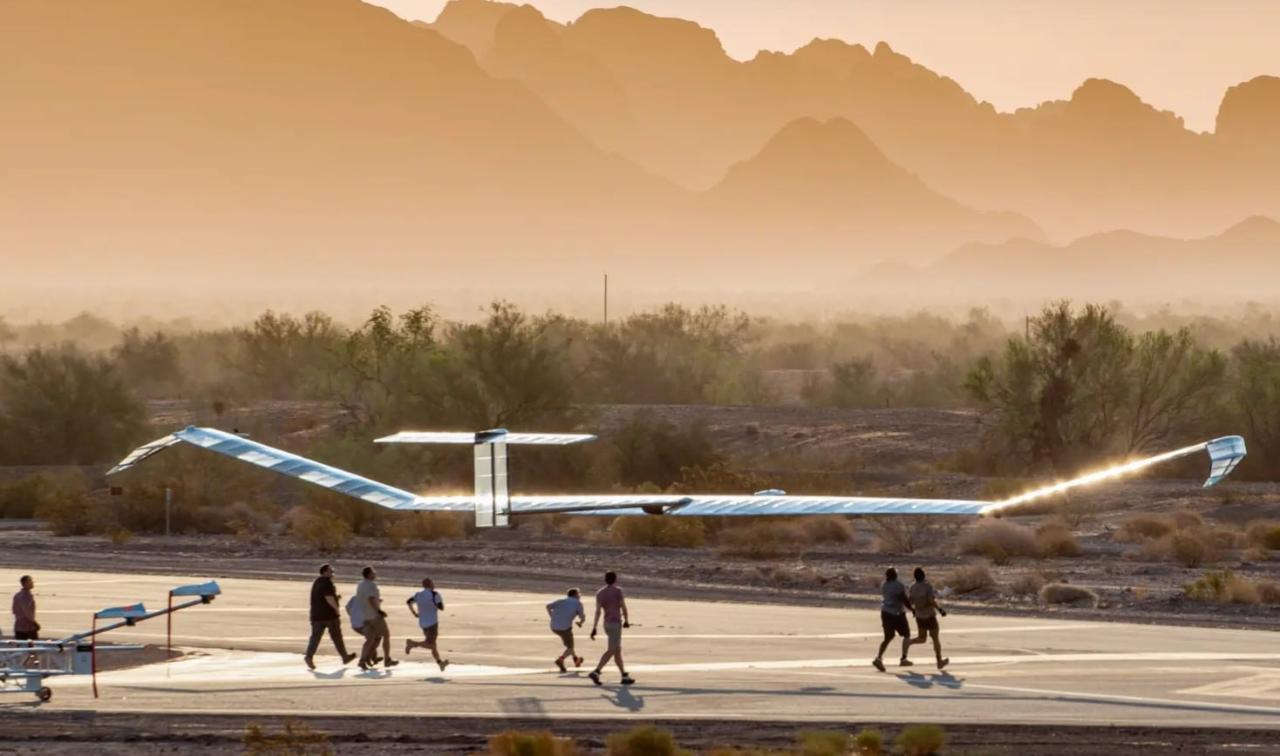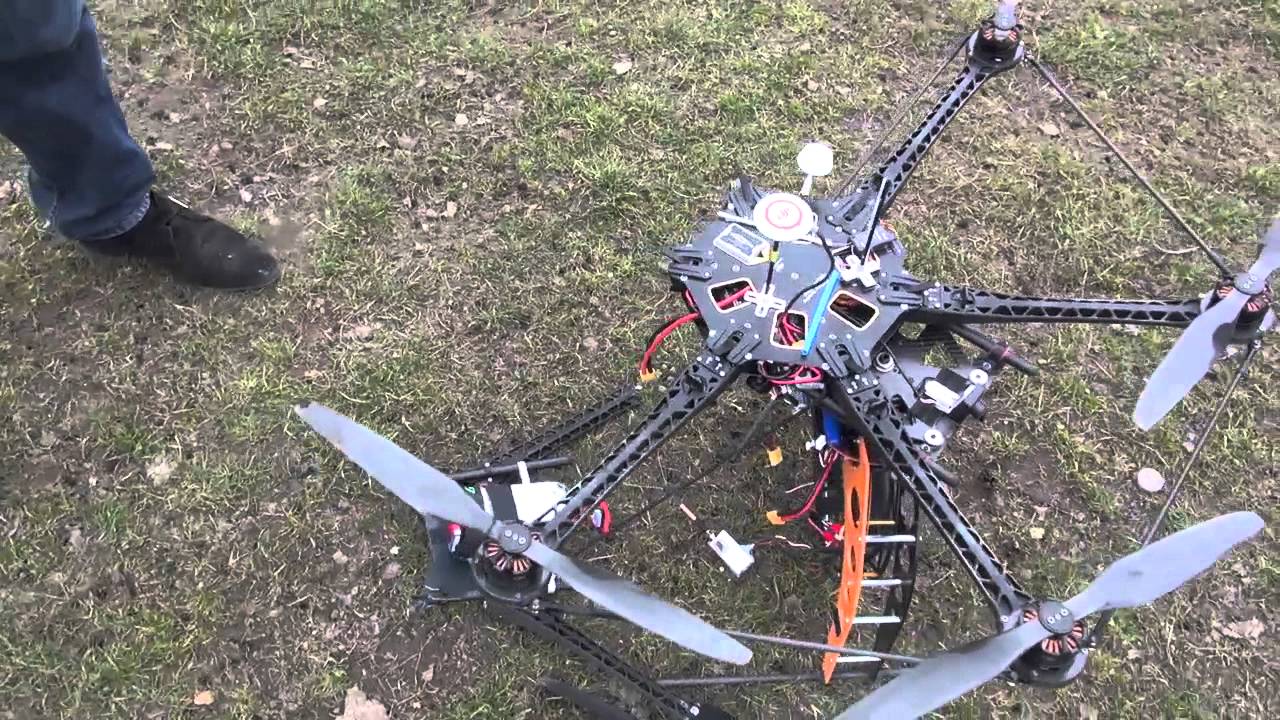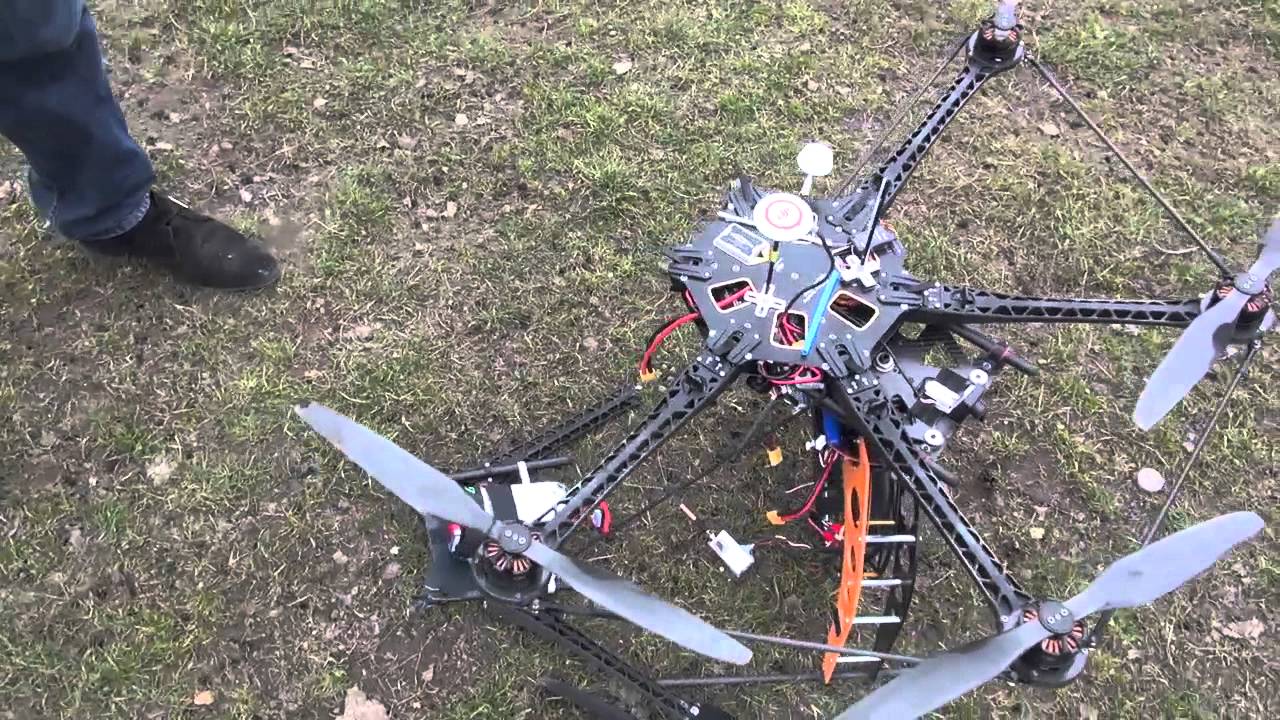Drone crashes in Paris are a growing concern, blending technological advancements with the challenges of urban airspace management. This exploration delves into the frequency, causes, impact, and prevention of these incidents, providing a detailed look at a complex issue affecting the City of Lights. We’ll examine everything from technical malfunctions and pilot error to the regulatory responses and public perception surrounding these events.
This analysis covers recent drone crash incidents, detailing the types of drones involved, the resulting damage, and the various factors contributing to these accidents. We’ll also investigate the economic and safety implications, exploring preventative measures and the role of technology in mitigating future risks. Ultimately, this aims to provide a clearer understanding of this emerging urban challenge.
Recent Drone Crash Incidents in Paris
Drone crashes in Paris, while relatively infrequent compared to other major cities, pose significant risks to public safety and infrastructure. Understanding the patterns and causes of these incidents is crucial for implementing effective preventative measures. This section details recent drone crashes, analyzes their frequency, and explores the types of drones involved.
Significant Drone Crash Incidents in Paris (Last Five Years)
The following table summarizes five of the most significant drone crashes in Paris over the past five years. Note that precise details of some incidents may be limited due to privacy concerns or ongoing investigations. Data is based on publicly available news reports and official statements, and may not be exhaustive.
| Date | Location | Damage | Brief Description |
|---|---|---|---|
| October 26, 2022 | Parc des Princes (near) | Minor property damage | A hobbyist drone crashed into a tree during a football match, causing minimal damage. No injuries were reported. |
| July 14, 2021 | Eiffel Tower (vicinity) | None | A drone malfunctioned and fell into the Seine River. No damage or injuries occurred. The drone was recovered. |
| May 5, 2020 | Louvre Museum (near) | Minor damage to a nearby building | A commercial drone, reportedly carrying a camera, lost control and crashed into a building adjacent to the Louvre. The damage was superficial. |
| December 12, 2019 | Gare du Nord (near) | None | A small hobbyist drone experienced a battery failure and landed harmlessly in a public square. |
| September 28, 2018 | Champ de Mars | Damage to a tourist’s camera | A drone carrying a high-resolution camera collided with a tourist’s camera, causing damage to the camera equipment. The tourist sustained minor injuries. |
Timeline of Drone Crashes in Paris (Last Decade)
The following timeline illustrates the reported frequency of drone crashes in Paris over the past ten years. It’s important to note that this data may not be completely comprehensive due to underreporting of minor incidents.
The number of reported incidents fluctuates yearly, likely due to factors such as increased drone usage, improved safety regulations, and varying levels of reporting.
- 2023: 2 reported incidents
- 2022: 3 reported incidents
- 2021: 1 reported incident
- 2020: 2 reported incidents
- 2019: 3 reported incidents
- 2018: 4 reported incidents
- 2017: 1 reported incident
- 2016: 0 reported incidents
- 2015: 2 reported incidents
- 2014: 1 reported incident
Types of Drones Involved in Crashes
This table categorizes the drones involved in reported crashes and explores potential contributing factors. The data is based on available information and may not reflect every aspect of each incident.
| Drone Type | Frequency | Potential Contributing Factors |
|---|---|---|
| Hobbyist Drones | High | Pilot error, battery failure, mechanical malfunction, loss of signal |
| Commercial Drones | Moderate | Mechanical failure, software glitches, GPS interference, operator negligence |
| (Unspecified) | Low | Insufficient data available to categorize definitively |
Causes of Drone Crashes in Paris

Drone crashes in Paris, like elsewhere, stem from a complex interplay of technical issues, human error, and environmental factors. Understanding these contributing elements is crucial for improving drone safety and preventing future incidents. This section will delve into the specific causes, providing insights into the mechanics of failures and the human element involved.
Technical Malfunctions Leading to Drone Crashes
Technical problems can unexpectedly ground even the most advanced drones. These malfunctions can occur at any point during a flight, often with devastating consequences. A thorough pre-flight check is essential to mitigate the risk.
- Battery Failure: Lithium polymer (LiPo) batteries, commonly used in drones, are susceptible to overheating, short circuits, or cell imbalance. These issues can lead to sudden power loss, resulting in an uncontrolled descent and crash. The risk is exacerbated by cold temperatures, which reduce battery performance, or by using damaged or improperly charged batteries.
- Motor Malfunction: Drone motors are high-precision components. Wear and tear, manufacturing defects, or impacts can cause motor failure. A single motor failure can lead to loss of control and a crash, particularly if the drone is not equipped with sufficient redundancy. Regular motor inspections and timely replacements are vital.
- GPS Errors: GPS signals are crucial for drone navigation and stability. Signal interference from tall buildings, atmospheric conditions, or deliberate jamming can disrupt GPS accuracy. This can cause the drone to lose its position, drift uncontrollably, and ultimately crash. Pilots should always be aware of GPS signal strength and be prepared to rely on visual navigation if necessary.
Human Error Contributing to Drone Crashes
Human error plays a significant role in drone accidents. Lack of proper training, inadequate maintenance, and disregard for regulations all increase the likelihood of a crash.
Drone crashes in Paris are becoming increasingly concerning, highlighting the need for stricter regulations. These incidents often raise questions about safety protocols, similar to the issues raised by the orlando drone show accident , which involved a spectacular malfunction. Understanding the causes behind these events, whether in Paris or Orlando, is crucial for preventing future incidents and ensuring safer drone operations.
| Type of Human Error | Impact on Crash Frequency | Example |
|---|---|---|
| Pilot Inexperience/Poor Judgment | High | An inexperienced pilot attempting a complex maneuver beyond their skill level, leading to a loss of control. |
| Improper Maintenance | Moderate | Failure to regularly inspect and maintain the drone’s components, leading to a mechanical failure mid-flight. |
| Ignoring Weather Warnings | Moderate | Flying a drone in strong winds or rain, exceeding the drone’s operational limits. |
| Illegal Operation (e.g., flying in restricted airspace) | High | Flying a drone near airports or other restricted areas, leading to a mid-air collision or regulatory intervention. |
Environmental Factors Influencing Drone Crashes
Paris’s urban environment presents unique challenges for drone operation. Various environmental factors can contribute to accidents.
- Weather Conditions: Strong winds, rain, or fog can significantly impact drone stability and control. Adverse weather can reduce visibility, affect GPS accuracy, and damage drone components. Operating drones in inclement weather is strongly discouraged.
- Obstacles: Paris is densely populated with tall buildings, trees, and power lines. Collisions with these obstacles are a significant risk, especially for inexperienced pilots or those flying in cluttered environments. Careful flight planning and obstacle avoidance are essential.
- Bird Strikes: Collisions with birds can damage drone propellers or other components, leading to a loss of control and a crash. This is a less predictable but still possible cause of drone accidents, particularly in areas with high bird populations.
Impact of Drone Crashes in Paris
Drone crashes in Paris, while relatively infrequent, have significant consequences impacting the city’s economy, safety, and regulatory landscape. Understanding these impacts is crucial for developing effective preventative measures and mitigating future risks.
Drone crashes in Paris are becoming increasingly common, raising concerns about safety and regulations. One particularly noteworthy incident, detailed in this report on a drone crash in Paris , highlighted the need for stricter guidelines. The investigation into this specific crash, and others like it, could lead to significant changes in how drones are operated within the city.
Economic Consequences of Drone Crashes
The economic repercussions of drone crashes in Paris are multifaceted and can be substantial. These incidents can lead to significant financial burdens for individuals, businesses, and the city itself.
- Property Damage: Crashes can cause damage to buildings, vehicles, and other property, leading to expensive repairs or replacements. For instance, a drone striking a historic building could necessitate costly restoration work involving specialized artisans and materials.
- Business Disruption: If a drone crash occurs near a business, it might lead to temporary closure, loss of productivity, and potential damage to reputation. A crash disrupting a high-profile event could result in significant financial losses for the organizers and related businesses.
- Insurance Costs: The increasing frequency of drone incidents is likely driving up insurance premiums for both drone operators and those whose property might be at risk. This increased cost is passed on to consumers and businesses, adding to the overall economic impact.
- Emergency Response Costs: Each drone incident requires a response from emergency services, diverting resources and incurring costs for the city. These costs can be substantial, especially for incidents requiring specialized equipment or personnel.
Safety Implications of Drone Crashes
The safety implications of drone crashes extend beyond mere property damage, posing significant risks to public safety and infrastructure. Understanding the various risk profiles is crucial for effective mitigation strategies.
| Type of Safety Risk | Potential Impact | Example |
|---|---|---|
| Injury or death to bystanders | Serious physical harm or fatalities resulting from impact or falling debris. | A drone falling from a significant height could cause serious injuries or even death to a pedestrian below. |
| Damage to critical infrastructure | Disruption or damage to essential services such as power lines, communication networks, or transportation systems. | A drone striking a power line could cause a power outage affecting a large area. |
| Air traffic interference | Collisions with manned aircraft, causing potential accidents and disruptions to air travel. | A drone entering controlled airspace near an airport could cause a serious incident. |
| Public panic and disruption | Fear and anxiety among the public, leading to disruptions and potential for further incidents. | A large drone crash in a crowded area could cause widespread panic and chaos. |
Regulatory Responses to Drone Crashes
In response to the increasing number and impact of drone crashes, Paris has implemented several regulatory measures aimed at enhancing safety and preventing future incidents.
- Stricter registration and licensing requirements: Paris has likely implemented or strengthened regulations requiring drone operators to register their drones and obtain appropriate licenses, ensuring accountability and adherence to safety standards. This includes detailed checks on operator competency and insurance coverage.
- Designated no-fly zones: The city has likely established and enforced no-fly zones around sensitive areas such as airports, government buildings, and crowded public spaces to prevent crashes and maintain safety. Clear signage and enforcement mechanisms are likely in place.
- Enhanced safety guidelines and training programs: Improved safety guidelines and mandatory training programs for drone operators have been implemented to educate operators on safe operating procedures and risk mitigation strategies. This includes training on emergency procedures and responsible operation.
- Increased penalties for violations: Paris has likely increased penalties for violations of drone regulations, acting as a deterrent and ensuring compliance. This could involve fines, suspension of licenses, or even criminal charges in severe cases.
Prevention and Mitigation Strategies

Preventing drone crashes in a bustling city like Paris requires a multi-pronged approach encompassing technological advancements, robust regulations, and responsible pilot behavior. This strategy aims to minimize the risk to both people and property while allowing for the continued benefits of drone technology. The following sections detail a comprehensive plan to achieve this goal.
Paris, a city of lights, has also seen its share of drone mishaps. These incidents, often involving unauthorized flights, highlight the need for stricter regulations. For a closer look at the specifics of these events, check out this resource on drone crashes in Paris , which provides details on the causes and consequences of these unfortunate occurrences.
Understanding these crashes helps improve drone safety in bustling urban environments like Paris.
A Comprehensive Plan to Reduce Drone Crashes
Implementing effective preventative measures requires a collaborative effort between technological developers, regulatory bodies, and drone pilots. The following table Artikels a strategic plan addressing key areas for improvement.
| Strategy | Implementation Details | Expected Outcomes |
|---|---|---|
| Enhanced Drone Technology | Mandating drones with advanced obstacle avoidance systems (using sensors like LiDAR and radar), GPS redundancy, and automatic return-to-home functions. Investing in research and development of fail-safe mechanisms that prevent catastrophic failures. | Reduced collisions with buildings, people, and other obstacles. Minimized risk of uncontrolled descent in case of system malfunction. |
| Stricter Regulatory Framework | Implementing no-fly zones around sensitive areas (e.g., airports, historical monuments, crowded public spaces). Enforcing mandatory drone registration and pilot licensing with rigorous training requirements. Increasing penalties for violations. | Improved airspace management, reduced risk in high-traffic areas. Increased accountability among drone operators. |
| Public Awareness Campaigns | Launching educational initiatives to inform the public about safe drone operation and the potential dangers of irresponsible use. Providing clear guidelines on responsible drone usage and reporting near-miss incidents. | Increased public awareness and understanding of drone safety. Improved cooperation between drone operators and the public. |
| Real-time Monitoring and Control | Developing a system for real-time monitoring of drone flights within designated airspace. Implementing a system for remote intervention in case of emergency situations. | Enhanced situational awareness, faster response times in emergencies, potential for preemptive intervention to prevent crashes. |
Recommendations for Drone Pilots
Pre-flight checks, meticulous flight planning, and well-rehearsed emergency procedures are critical for safe drone operation. Negligence in any of these areas significantly increases the risk of accidents.
Before each flight, pilots should conduct thorough pre-flight checks, including:
- Inspecting the drone for any physical damage or loose components.
- Verifying the battery level and ensuring sufficient power for the planned flight duration.
- Checking the GPS signal strength and accuracy.
- Confirming the functionality of all sensors and control systems.
- Reviewing the weather forecast and avoiding flights in adverse conditions.
Careful flight planning is essential to mitigate risks:
- Familiarizing oneself with local regulations and no-fly zones.
- Planning a flight route that avoids obstacles and high-traffic areas.
- Maintaining visual line of sight with the drone at all times.
- Considering alternative landing sites in case of unexpected events.
Knowing how to handle emergencies is crucial:
- Practicing emergency procedures, such as initiating an immediate return-to-home function in case of signal loss or malfunction.
- Understanding how to safely land the drone in unexpected situations.
- Knowing how to contact relevant authorities in case of an accident or near-miss.
Improved Drone Technology for Crash Prevention
Advanced technologies offer significant potential for preventing future drone crashes.
- Advanced Obstacle Avoidance Systems: LiDAR and radar sensors provide real-time 3D mapping of the surrounding environment, allowing drones to autonomously avoid obstacles, even in complex urban settings. This significantly reduces the risk of collisions with buildings, trees, or people.
- Autonomous Flight Systems: Sophisticated algorithms enable drones to navigate autonomously, following pre-programmed routes and adapting to changing conditions. This reduces pilot error, a significant contributor to many drone accidents.
- Redundant Systems: Implementing backup systems for critical components, such as multiple GPS receivers or independent flight controllers, ensures that the drone can continue operating safely even if one system fails. This increases the overall reliability and safety of the drone.
- Fail-Safe Mechanisms: Incorporating automatic emergency landing systems, which activate when critical errors are detected, can prevent uncontrolled crashes and minimize potential damage.
- Geo-fencing and Flight Restrictions: Software-based restrictions that prevent drones from entering unauthorized airspace, like airports or restricted areas, further enhance safety.
Public Perception and Media Coverage
The aftermath of drone crashes in Paris has significantly impacted public perception of these technologies, shaped largely by media portrayals. Understanding this interplay is crucial for developing effective drone regulations and fostering public trust. The media’s framing of events, coupled with the public’s reactions, has created a complex narrative surrounding drone safety and usage in the city.Media outlets have played a pivotal role in shaping public opinion regarding drone incidents in Paris.
Their reporting, however, has not always been neutral or consistent.
Media Portrayals of Drone Crashes
The portrayal of drone crashes in Parisian media often focused on several recurring themes. It’s important to analyze these themes to understand the overall narrative constructed.
- Emphasis on Spectacle and Sensationalism: Many news reports emphasized the visual impact of the crashes, often using dramatic imagery and headlines to attract viewers and readers. This approach sometimes overshadowed the underlying causes and broader implications of the incidents.
- Focus on Potential Threats: A common theme was the highlighting of potential risks associated with drones, particularly concerning safety and security. Reports frequently mentioned the possibility of drones being used for malicious purposes, even if the actual crash wasn’t linked to such activities. This fueled anxieties about drone technology.
- Lack of Contextual Information: Some reports lacked sufficient context regarding drone regulations, the overall safety record of drones, or the benefits of drone technology. This unbalanced presentation contributed to a negative perception of drones in general.
- Inconsistent Reporting on Causes: The accuracy and consistency of reporting on the causes of crashes varied significantly between media outlets. Some reports provided detailed investigations and analyses, while others offered speculative or incomplete explanations, leading to confusion and uncertainty among the public.
Public Perception of Drones After Crashes
Following drone crashes, public perception in Paris shifted noticeably. While some individuals maintained a positive view of drones’ potential benefits, many others expressed concerns and anxieties.Public opinion was heavily influenced by the media’s coverage, which often emphasized the potential dangers. Fear of accidents, damage to property, and potential misuse fueled a negative perception. This fear manifested in reduced trust towards drone operators and increased calls for stricter regulations.
However, a segment of the population remained supportive, emphasizing the potential benefits of drones in various sectors, such as delivery services, infrastructure inspections, and photography. The overall sentiment was a mix of apprehension and cautious optimism, depending on individual experiences and media consumption.
Comparison of Public Opinion on Drone Regulation, Drone crashes in paris
The following table compares public opinion on drone regulation before and after significant drone crashes in Paris. Note that these figures are hypothetical examples illustrating the potential shifts in public sentiment; precise data requires extensive polling and survey research.
| Aspect of Public Opinion | Before Significant Crashes | After Significant Crashes |
|---|---|---|
| Support for lenient regulations | 60% | 35% |
| Support for stricter regulations | 25% | 50% |
| Indifference/Lack of opinion | 15% | 15% |
| Trust in drone operators | 40% | 20% |
| Fear of drone-related accidents | 10% | 30% |
Concluding Remarks

Drone crashes in Paris highlight the urgent need for a multi-faceted approach to urban drone safety. While technological advancements offer promising solutions, robust regulations and responsible pilot behavior remain crucial. By understanding the causes, consequences, and prevention strategies, we can work towards a safer airspace for both drones and Parisians alike. The future of drone integration in urban environments hinges on proactive measures and a collaborative effort between authorities, drone operators, and the public.
Common Queries: Drone Crashes In Paris
What are the penalties for illegal drone operation in Paris?
Penalties vary depending on the severity of the violation but can include hefty fines and even imprisonment.
How can I report a drone incident in Paris?
Contact the local police or gendarmerie immediately. You may also report it to the relevant aviation authority.
Are there designated drone flight zones in Paris?
Yes, check the official websites for updated information on authorized flight zones and restrictions.
What insurance is required for operating a drone in Paris?
Specific insurance requirements exist; consult French aviation regulations for details. Liability insurance is strongly recommended.
